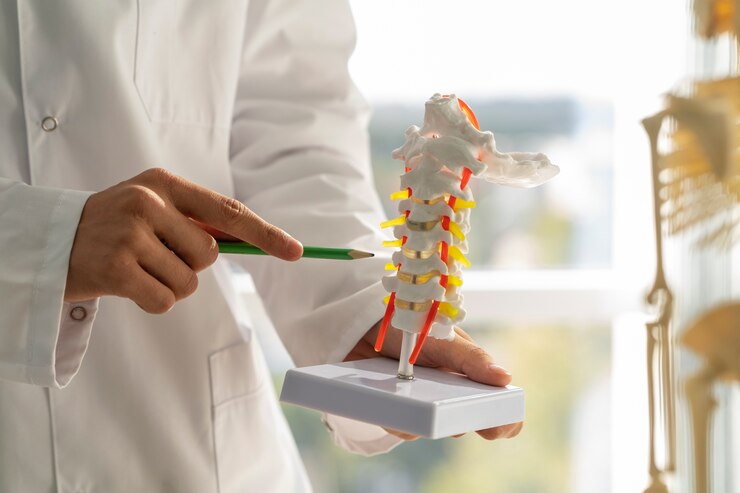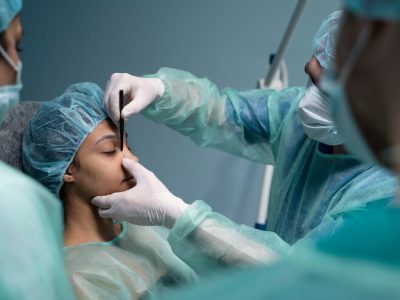Spinal Stenosis Treatment Journey – Diagnosis To Relief

Spinal stenosis impacts the spinal canal, applying pressure on the nerves and spinal cord. This can result in symptoms such as pain, discomfort, numbness, and a lack of strength in the back, legs, and arms.
The impact of spinal stenosis on daily life can often be significant, limiting movement in the back and making it very challenging to perform routine activities.
It is very important that individuals who experience such symptoms seek a medical consultation at the earliest possible opportunity to help alleviate their side effects and improve their standard of living.
Spinal Stenosis: Causes, Symptoms, and Diagnosis
This condition involves the spinal canal becoming too narrow, often due to age-related wear and tear in the spine. Other common causes of stenosis can include bone spurs, herniated discs, and thick ligaments.
As a result of these issues, additional pressure on the nerves and spinal cord is applied. This will typically cause symptoms like pain, numbness, tingling, and weakness, as mentioned above.
Diagnosis typically requires a medical professional(s) to consider the patient’s medical history, conduct a physical examination, and perform imaging tests.
For example, questions will be asked to enquire about any symptoms, the physical examination will assess a person’s strength and reflexes. and imaging tests (X-ray, MRI, or CT) will be used to further help to verify the diagnosis.
Non-Surgical Treatment Options for Spinal Stenosis
There are a variety of non-surgical options available for those suffering from spinal stenosis.
- Medications like nonsteroidal anti-inflammatory drugs (NSAIDs), painkillers, or muscle relaxants can be prescribed for pain and inflammation management. A doctor may also recommend pain-killing (corticosteroid) injections to reduce the inflammation and offer temporary relief.
- Physiotherapy is also recommended as a non-surgical treatment for the condition. A physical therapist will devise a bespoke exercise plan to work on a person’s posture, flexibility, and strength. Physiotherapy can tackle symptoms and boost spinal functionality. Treatment may also include heat/ cold therapy, ultrasound techniques, or electrical stimulation therapy.
- Exercise is vital for spinal stenosis management. This can include low-impact activities like walking, swimming, and cycling to improve strength and mobility without applying excess strain on the back.
Surgical Treatment Options for Spinal Stenosis
Unfortunately, non-surgical treatments won’t always deliver the intended results and surgery may be recommended for someone who is suffering from severe symptoms that have gotten worse over time.
Surgical procedures that are performed to treat spinal stenosis could include a laminectomy, a laminotomy, and spinal fusion.
A laminectomy involves part of the lamina being removed which is the bony arch that covers the spinal canal. This type of surgery effectively alleviates pressure on the nerves and spinal cord.
Meanwhile, a laminotomy is a similar procedure, but only involves a small part of the lamina being removed. Finally, Spinal fusion joins together two or more vertebrae, usually with screws, rods, and a bone graft, helping to stabilize the spine and reduce pain.
A modern alternative is also a Premia spine TOPS System implant, which helps to maintain mobility and movement in a person’s back, as well as offering shorter recovery times.
Lifestyle Changes to Manage Spinal Stenosis
Surgery is not always necessary, however, and sometimes making simple lifestyle changes can help reduce symptoms and improve overall well-being.
Firstly, the individual should always maintain a healthy diet for weight management and for reducing inflammation, as some fatty and unhealthy foods can contribute to pain and discomfort. Sticking to a diet that is rich in fruit, vegetables, whole grains, and healthy proteins can provide the necessary nutrients to boost spine health.
Secondly, maintaining a proper posture is vital for individuals who have spinal stenosis. Maintaining perfect posture relieves pressure on the spine and eases symptoms. To improve posture you should avoid slouching or hunching over. You may even consider using an ergonomic chair and equipment to encourage better alignment.
Stress can also be a factor. Therefore adopting stress management techniques can be very beneficial for individuals with spinal stenosis. Chronic stress can often exaggerate pain so finding healthy ways to manage stress is highly recommended. This could involve deep breathing exercises, meditation, yoga, or hobbies and activities that promote better relaxation.
Alternative Therapies for Spinal Stenosis
Aside from traditional medical treatments, a person may consider alternative therapies that can provide additional comfort and improve spine health.
For example, Chiropractic treatment focuses on the alignment of the spine and nervous system which may require manual adjustments to enhance spinal function.
Acupuncture on the other hand involves needles being inserted into certain points on the body to stimulate energy flow and fast track recovery.
Or, massage therapy can aid relaxation of the muscles, improve blood circulation, and decrease pain and tension in affected areas.
Preventing Spinal Stenosis: Tips for Maintaining Spine Health
Although it may not be entirely possible to prevent spinal stenosis, there are measures that people can adopt to maintain spinal health and better prevent the likelihood of future issues.
Measures could consist of maintaining a healthy weight, taking part in regular exercise to strengthen muscles that support the spine, practicing a good posture, and avoiding activities that exert too much pressure on the spine.
Avoiding smoking is also strongly advised for anyone suffering from back problems as it can contribute to the weakening of the vertebrae and other parts of the spine. Smoking can impede blood flow and negatively affect the body’s ability to heal – this can heighten the risk of any complications.
Conclusion
In conclusion, Spinal stenosis can have a significant, negative affect on daily life. But fortunately, there are treatment options out there to help manage symptoms and improve quality of life. Anyone experiencing spinal stenosis symptoms should seek medical treatment as soon as possible. They should work closely with their healthcare professional to create a suitable treatment plan.
Treatment will typically include non-surgical treatments like medication, physiotherapy, and gentle exercise. But surgical options may be recommended for severe cases. Simple lifestyle changes and alternative therapies can have a big impact.
Whatever treatment is recommended, anyone experiencing spinal stenosis should take a gradual and proactive approach to improving spine health.
Thank you for reading, we hope this article has been of some assistance.
Read Also:
























